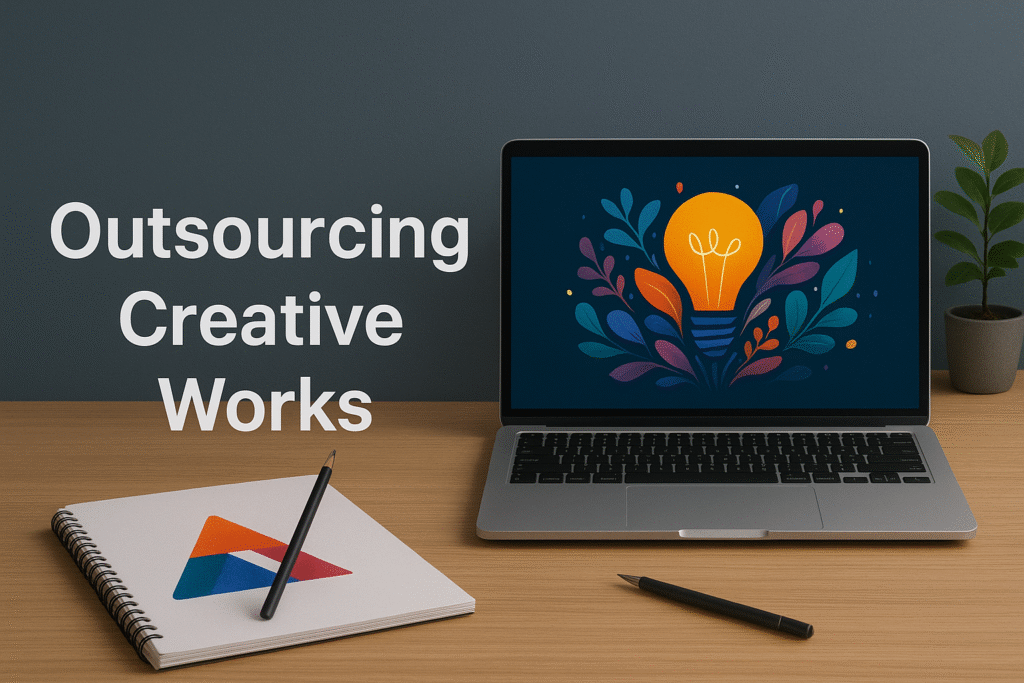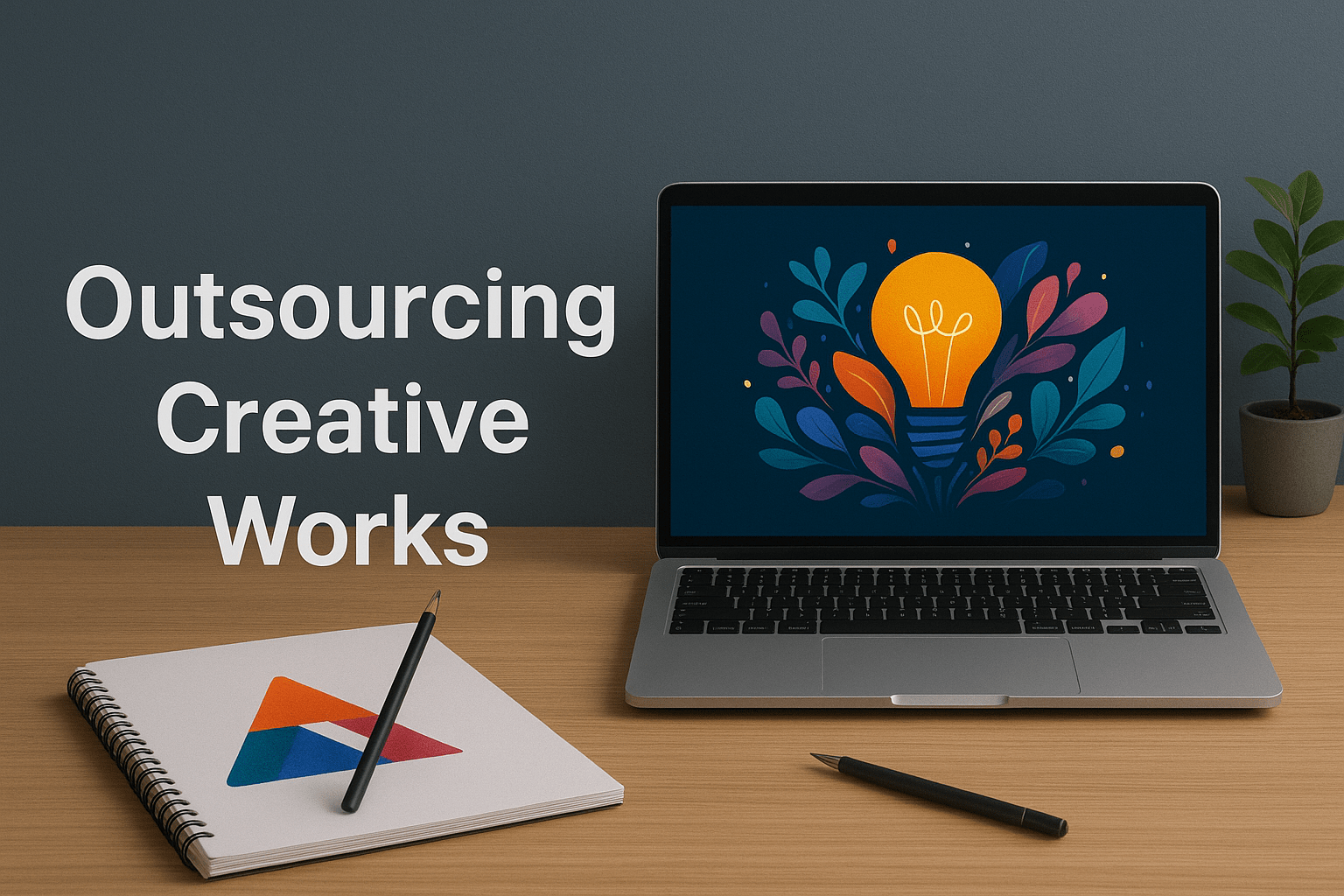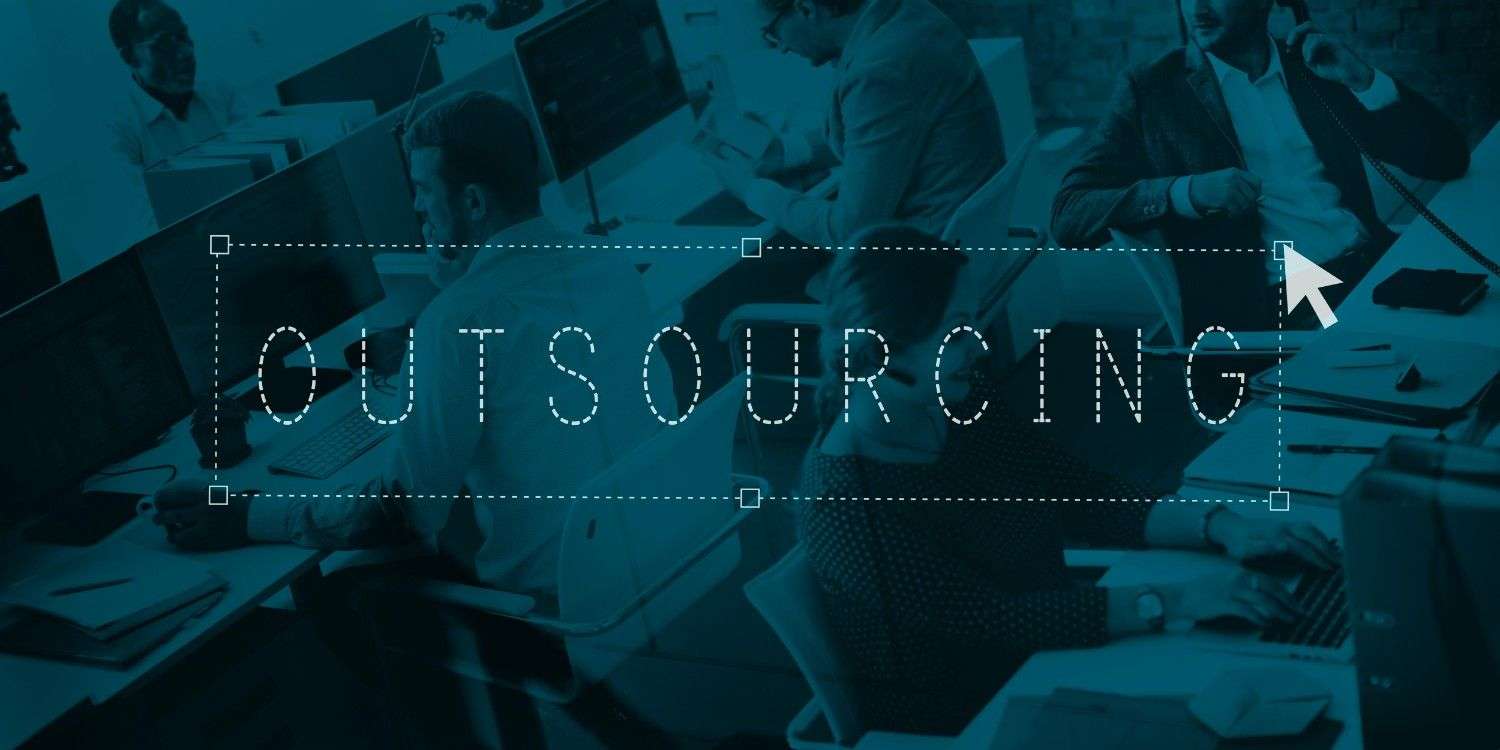How to Measure ROI on Outsourced Creative Works
Posted on : Nov 19, 2025
For modern brands, creative content is the fuel of the digital economy. Whether it’s high-volume 2D Graphics & Illustration for social media, cinematic Visual Effects (VFX) for a hero product launch, or technical assets for Augmented Reality – Virtual Reality (AR/VR), content expenditure is significant. Yet, proving the tangible Return on Investment (ROI) of Outsource creative works remains a persistent challenge for many financial and marketing leaders.

The successful measurement of ROI on Outsource creative services requires moving beyond simple cost-saving metrics (i.e., comparing salary costs) to a holistic framework that captures gains in efficiency, quality, speed-to-market, and direct revenue impact. The goal is to prove that the expenditure on Outsource creative design services is a strategic investment that generates greater profit and capacity than the equivalent internal cost structure.
For modern brands, creative content is the fuel of the digital economy. Whether it’s high-volume 2D Graphics & Illustration for social media, cinematic Visual Effects (VFX) for a hero product launch, or technical assets for Augmented Reality – Virtual Reality (AR/VR), content expenditure is significant. Yet, proving the tangible Return on Investment (ROI) of Outsource creative works remains a persistent challenge for many financial and marketing leaders.
Measuring the Return on Investment (ROI) of Outsource creative services requires moving beyond simple cost savings and delving into performance, efficiency, and strategic enablement. ROI is not just about spending less; it’s about achieving more impact, faster, and with greater specialization.
Part I: Operational ROI: The Efficiency and Cost Savings Metrics
The most straightforward way to measure ROI is by quantifying the direct and indirect cost savings achieved through operational efficiency gains. This area proves the efficiency and financial logic of Outsource creative services.
1. Cost Per Asset (CPA) Reduction
This is the foundational metric comparing the total, fully-loaded cost of internal production versus outsourcing.
- Internal CPA Calculation: Include all fixed and variable costs: salary, benefits, payroll taxes, specialized software licenses (e.g., VFX suites, 3D modeling tools), hardware depreciation, a prorated share of overhead (rent, utilities), and management time, divided by the total number of assets produced.
- Outsourced CPA Calculation: The total payment to the Outsource creative works partner divided by the total assets delivered.
- Focus on 2D Services: This metric is highly effective for high-volume 2D Graphics & Illustration where production is routine (e.g., social media banners, email creative). Outsourcing often achieves a dramatically lower CPA due to specialization and scale, proving the cost-effectiveness of 2D Services outsourcing.
2. Time-to-Market (TTM) Reduction
Speed is a competitive advantage, especially for digital content that must capitalize on trends or meet tight campaign windows.
- Metric: Measure the average cycle time from the moment the internal design brief is approved to the point the final, approved asset is delivered (ready for launch). Compare the internal average against the outsourced average.
- ROI Impact: A reduced TTM (e.g., cutting the launch cycle from 4 weeks to 2 weeks) allows the brand to capture revenue sooner, extend the campaign flight time, and beat competitors to market. Quantify the revenue generated during the time saved. Outsourcing’s 24/7 “follow-the-sun” model is a key driver here.
3. Capacity Gain and Risk Mitigation
Quantify the cost avoided by not hiring and the subsequent increase in internal capacity.
- Metric: Calculate the annual cost of the full-time employee (FTE) equivalent (including salary, benefits, and overhead) that would have been required to produce the volume of Creative Services delivered by the partner. This is the cost avoided.
- Risk Avoidance: Quantify the cost avoided from mitigating turnover risk. Outsourcing eliminates the significant cost (often estimated at 6-9 months’ salary) associated with recruiting, hiring, and training a specialized replacement when an internal expert leaves—a crucial benefit when needing niche skills for complex VFX or AR/VR development.
Part II: Quality and Performance ROI: The Direct Impact Metrics
These metrics link the quality and specialization of the outsourced asset directly to measurable marketing performance indicators and business outcomes.

4. Conversion Rate (CVR) and Click-Through Rate (CTR)
The superior quality and technical precision offered by specialized Outsource creative design services should directly translate into higher engagement.
- A/B Testing: This is essential for proving value. Run simultaneous A/B tests comparing internally created 2D Graphics & Illustration or 3D Rendering with assets provided by the Outsource creative design services partner.
- Metric: Measure the CTR on advertising campaigns and the CVR on landing pages for content created by the partner. Higher engagement rates directly prove that the specialized quality drives better performance and justifies the investment. For VFX-heavy video ads, tracking view completion rates also applies.
5. Augmented Reality – Virtual Reality (AR/VR) Engagement and Sales Lift
For immersive and specialized assets, performance must be tracked not just by views, but by interactive time and direct sales outcomes.
- Metric:
- Interaction Rate: The percentage of users who actively engage with the AR/VR feature (e.g., placing the virtual furniture, activating the 3D configurator).
- Dwell Time: The average time spent interacting with the AR/VR asset (longer is better, indicating engaging 3D Modeling and Design quality).
- Sales Lift: For products like 3D Furniture Modeling or specialized 3D Product Design using AR, track the percentage increase in sales conversion specifically attributed to users who activated the AR view before purchasing. The ROI is calculated by comparing the cost of modeling vs. the revenue from the lift.
- Interaction Rate: The percentage of users who actively engage with the AR/VR feature (e.g., placing the virtual furniture, activating the 3D configurator).
6. Reduction in Product Returns
This is a powerful, often overlooked ROI metric, especially for large, high-value, or complex items like furniture or apparel.
- ROI Impact: Outsource creative works provides high-fidelity, dimensionally accurate 3D Modeling and Design and 3D Rendering assets. This visual accuracy reduces “expectation vs. reality” returns, which is a major cost driver in e-commerce.
- Metric: Track the rate of product returns, specifically those flagged for dimensional or appearance discrepancies. Calculate the average cost of a return (shipping, restocking, damage, lost revenue) and multiply it by the number of returns avoided due to the accurate outsourced content.
Part III: Strategic ROI: Focus and Innovation Metrics

This framework measures the long-term value generated by shifting the internal team’s focus from execution to high-level, strategic work—the ultimate goal of strategic Creative Services outsourcing.
7. Core Competency Focus and Strategic Time Gain
Quantify the time senior internal staff gained for strategic activities that drive future revenue.
- Metric: Track the percentage of senior creative staff time shifted from production execution (e.g., resizing 2D Graphics & Illustration, simple compositing) to core strategic tasks: conceptual ideation, client relations, brand strategy development, and internal innovation (e.g., piloting a new VFX pipeline or developing a forward-looking AR/VR strategy).
- ROI Impact: The ability of an internal Creative Director or Art Director to spend 20% more time on client acquisition or brand strategic planning translates directly into business growth, competitive differentiation, and future revenue—a key strategic return from Outsource creative services.
8. Quality Improvement and Process Efficiency
Measure the impact of the outsourcing partnership on project quality assurance (QA).
- Metric: Measure the reduction in revision cycles per asset. Fewer revisions mean the initial brief was stronger, and the Outsource creative works partner’s execution quality was higher, saving valuable internal management time and reducing project friction.
- Standards Compliance: Assess the percentage of outsourced assets that meet technical compliance standards (e.g., correct file size, PBR Texturing integrity, naming conventions) on the first delivery. High compliance ensures assets are immediately usable, reducing internal QA labor.
Part IV: The Holistic ROI Calculation and Conclusion
Combining all factors provides a complete, justifiable measure of success for Outsource creative services, moving the discussion from cost to value.
9. The Total Creative ROI Formula
A comprehensive calculation incorporates all major positive and negative financial factors:
- Total Revenue Lift: Revenue from CVR/CTR improvements, sales lift from AR/VR, and revenue from TTM acceleration.
- Total Cost Savings: Savings from CPA reduction (FTE, software, overhead) and elimination of photography/studio costs.
- Cost of Avoided Risk: Savings from reduced product returns and avoided FTE recruitment/training costs.
- Total Outsourcing Cost: All fees paid to the Outsource creative services partner.
10. Conclusion: The Path to Strategic Investment
Measuring ROI on Outsource creative works is not a one-time task; it’s a continuous optimization process. It is about understanding that the cost of highly specialized Creative Services (such as high-end VFX or intricate AR/VR optimization) is an investment that yields measurable results in performance, efficiency, and market speed.
The ROI of Outsource creative works is complex, extending far beyond the initial invoice amount. It is the quantification of speed, specialization, and strategic enablement.
For growing brands, the true value lies in securing an elastic, expert engine that not only saves money but also accelerates market entry, maximizes content volume, and provides immediate access to high-impact technologies like VFX and AR-VR Outsourcing. By utilizing a comprehensive set of financial, operational, and strategic metrics, leaders can confidently demonstrate that strategic Outsource creative design services is not merely an expense—it is a powerful, measurable investment in future market growth and competitive differentiation.
❓ Frequently Asked Questions (FAQ)
1. What is the most basic financial metric for measuring ROI on Outsource creative works?
The most basic metric is Cost Per Asset (CPA). This compares the total cost (including salary, overhead, and software) of producing an asset internally versus the fee paid to the Outsource creative services partner for the same deliverable.
2. How can I use A/B testing to prove the ROI of Outsource creative design services?
You A/B test by running campaigns where the control group uses internal creative and the test group uses the outsourced creative. A significant increase in Click-Through Rate (CTR) or Conversion Rate (CVR) proves the Creative Services partner delivers a higher-performing asset, justifying the investment.
3. What is “Strategic ROI” and how do I measure it?
Strategic ROI measures the value generated by freeing up internal talent. It is measured by tracking the percentage of senior staff time shifted from production tasks to high-value activities like strategic planning, innovation (e.g., developing new VFX concepts), and client acquisition.
4. How does outsourcing for Augmented Reality – Virtual Reality reduce product returns?
Outsourcing helps by providing highly accurate, optimized 3D Modeling and Design assets. When customers use AR features, they confirm size and fit, reducing the primary cause of returns (dimensional mismatch) and saving the brand the cost of shipping, restocking, and damage.
5. Why is Time-to-Market (TTM) a crucial ROI metric for 2D Services outsourcing?
TTM is crucial because faster delivery allows campaigns to launch sooner, capitalizing on market trends and generating revenue for a longer period. Outsource creative works often uses a 24/7 workflow to significantly cut the TTM for assets like 2D Graphics & Illustration.
6. What costs should I include in the “Internal CPA” calculation to ensure accuracy?
The internal CPA must include all fixed and variable costs, such as the prorated salary/benefits of the designer, the annual cost of specialized software licenses (VFX, 3D), hardware depreciation, management time, and a share of office overhead.



